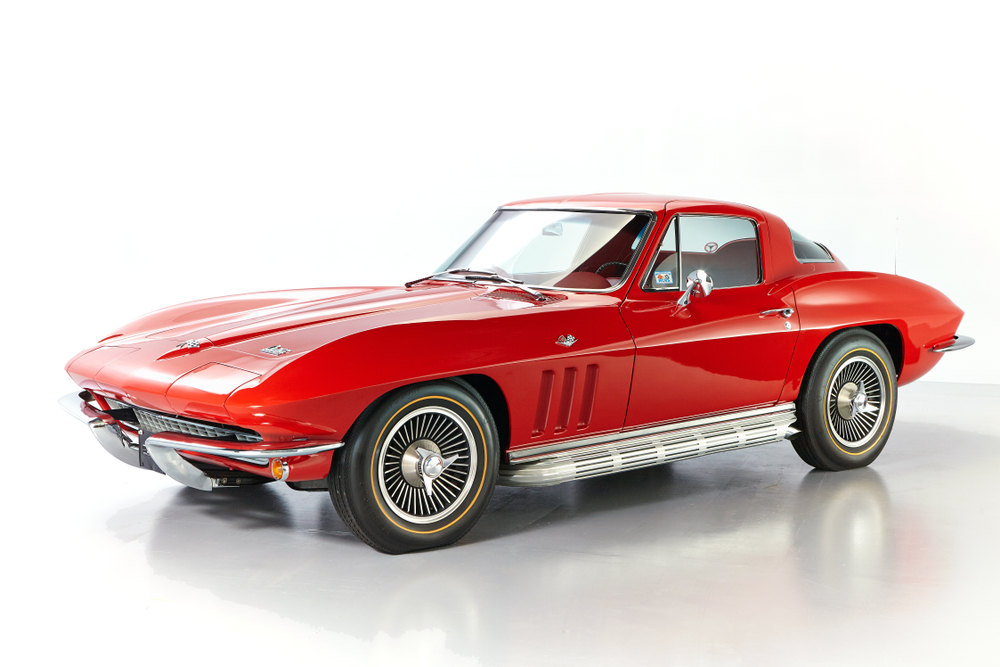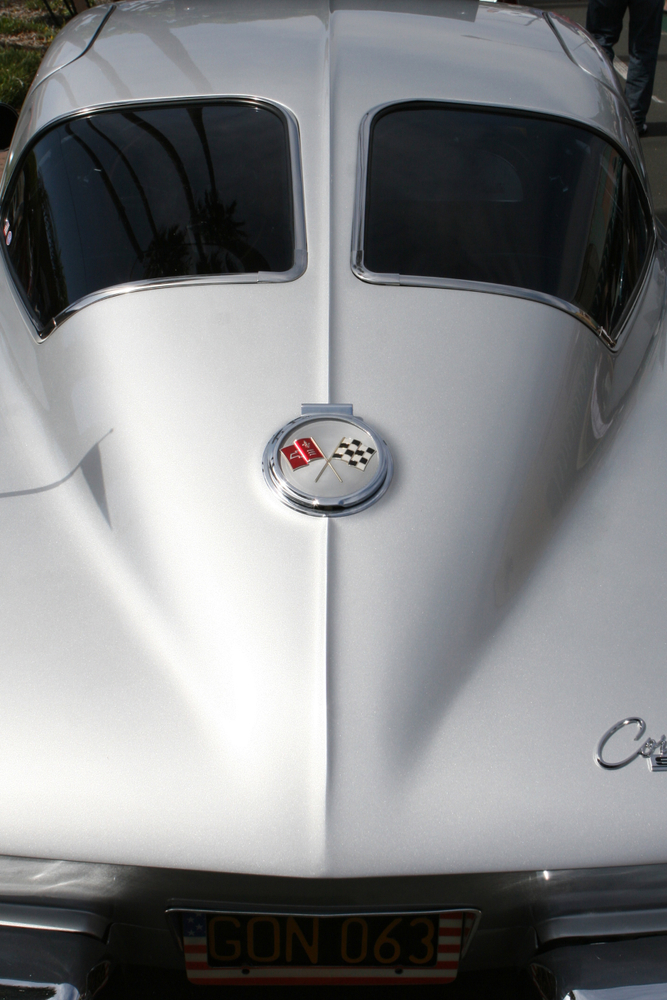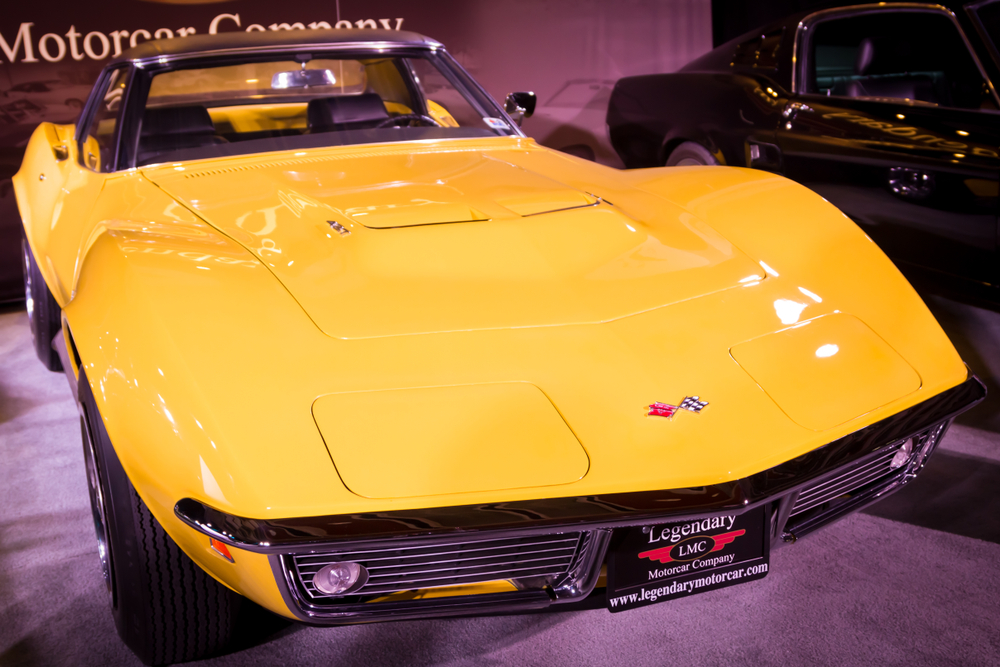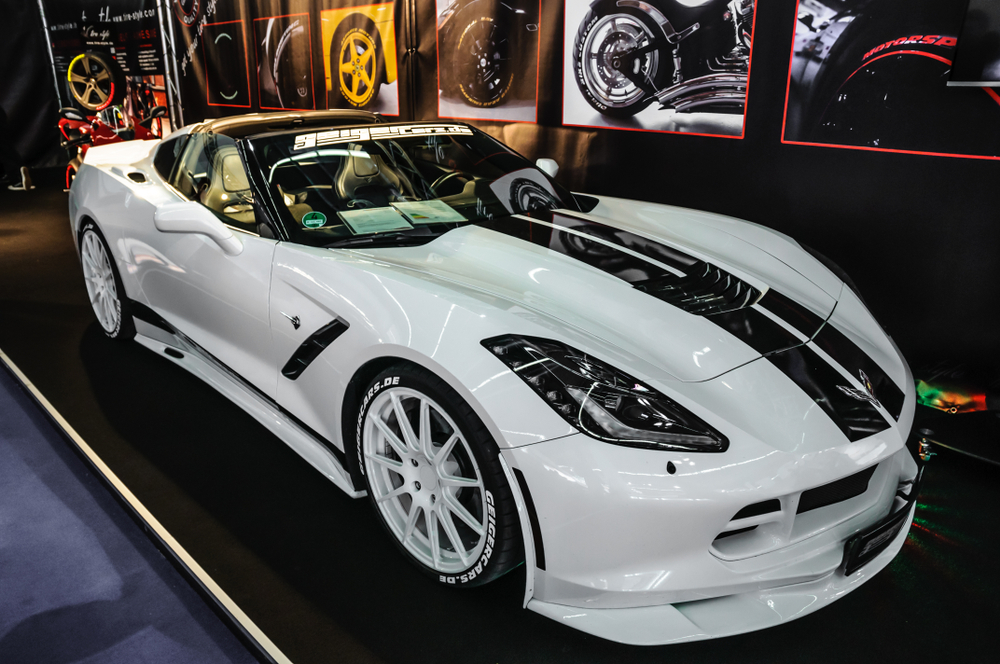
The Chevrolet Corvette debuted in 1953. The Corvette resembles the very best of European sports cars and is recognizably American.
Chevrolet designers took a gamble on a lightweight fiberglass body. No other manufacturing company mass-produced a fiberglass-bodied car.
The Corvette was named after a fast and agile warship. The first few years did not live up to the legend. Powered by a mildly modified straight six. Suspension and braking components came off the shelf from other Chevrolet production vehicles.
Drivers said acceleration was slow, braking was hard and the fiberglass body leaked.
In late 1955, Chevrolet introduced a new small-block V8 to keep up with the Ford Thunderbird which came with a V8 and a manual transmission off the showroom floor. The Thunderbird no longer posed a threat when Ford moved it upmarket in 1958 and created a new class of car, the personal luxury vehicle.
The next 65 years of Corvette production use the front-engine, rear-drive set-up. The 2020 Corvette will do away with the front-engine V8 for the first time, becoming a mid-engine sports car. Famed Corvette designer Zora Arkus-Dontov intended a mid-engine Corvette in the late 1950’s.
C2 Sting Ray
The second generation (C2) Corvette hit the streets in 1963. Arkus-Duntov engineered a new independent rear suspension and the Corvette got a 327 ci V8 standard. Fuel-injection was available for the first time.
The redesigned car also earned a new name: Corvette Sting Ray. The name came from a concept car-turned weekend racer known as the Corvette Sting Ray Special.
The 1963 Corvette Sting Ray coupe had a unique split rear window design. Split window Sting Ray coupes are among the most valuable and desirable Corvettes.
 The unique 1963 Corvette Sting Ray Split Window Coupe
The unique 1963 Corvette Sting Ray Split Window CoupeThe Chevrolet 396 big-block became available in 1965. The big-block Corvette gained the power buyers demanded with the available fully functional side-pipe exhaust. The big-block option was so popular that Chevrolet discontinued the expensive fuel-injected V8 in 1966. Fuel-injection would not be available again until 1982.
The C2 never had a serious rival. Chevrolet built a total of 2,157 396-powered Corvettes in 1965. The sports cars closest rival, Shelby American built a total of 348 big-block Cobras between 1965 and 1967.
From Sting Ray to Stingray
Chevrolet introduced the C3 Corvette in 1968 without the Sting Ray name. Chevrolet brought the Stingray name back in 1969 as one word and continued to use Stingray on all C3s until 1976. The C3 Corvette stayed in production until 1983.
The C3 Corvette had 11 small-block engine options, 10 big-block options, and four different transmissions. Big-block C3 Corvettes feature a special hood bulge to clear the massive engine. Small-block C3s had a flat hood.
 The C3 Corvette Stingray showing the hood bulge that hides a big-block V8.
The C3 Corvette Stingray showing the hood bulge that hides a big-block V8.1969 was the only year for the ZL1 package. The ZL1 is an all-aluminum 427 cubic inch big block beast that pumps out a whopping 430 horsepower. Testing showed the true horsepower to be more in the 550 to 585 hp range.
From 1973 forward, Chevrolet did not use the name Stingray for the Corvette.
The Return of the Stingray
In 2010, Chevrolet trademarked Stingray. Stingray was back in 2015 to attract a new generation of owners.
The newest Stingray’s are available with three engine packages, the LT1, Z06 and ZR1. The newest small-block V8 measures in at 6.2 L. In base trim, a Corvette Stingray produces 455 horsepower and can blast through 60 miles per hour from a stop in four seconds or less. The body is still fiberglass-based. The hood, doors and roof panels are composite material to reduced weight and increase strength.
 Chevrolet brought back the Stingray name for the last generation of front-engine sports cars.
Chevrolet brought back the Stingray name for the last generation of front-engine sports cars.Rumors abound that the soon-to-be-released C8 will also carry the Stingray name. The Corvette has always been about the thrill of driving, and has progressed from a timid sports car to a roaring luxury touring car.
Corvettes are among the most desirable of all American cars and are instantly recognizable regardless of year. Spy photos and press materials show the C8 with the short-deck, long-hood signature style in use for more than 65 years.
How Much Does a Corvette Cost?
Hagerty insurance puts a concours-level ’63 Sting Ray at $343,000. A “fair” condition car might still run buyers more than $143,000. For comparison, a 1969 Corvette Stingray big-block can be bought in showroom shape for $70,000. Cars needing restoration work are available for less than $15,000.
Some models of the Sting Ray are expensive and rare. Only 136 Chevrolet Corvette Sting Ray coupes were built in 1963. Think that’s rare? Only one 1969 Corvette Stingray ZL1 is known to exist. Ninety-four ZL1 427 engines were made for Corvettes in 1969.
Two 1969 Corvette ZL1 cars were sold to the public, but only one is known to exist.
Can I Work on My Corvette Myself?
Corvettes are great for the average enthusiast because they are easy to repair and restore. Fiberglass can be tricky to work with, but it is easier than aluminum and cheaper than steel. Most mechanical components used throughout the model years are cross-compatible with other General Motors vehicles. This gives home mechanics excellent access to replacement parts. Chevrolet Corvette service and repair manuals that are identical to the ones issued to professional mechanics make it simple for do-it-yourself mechanics to maintain and enjoy.
Find a repair service manual for every model Chevy Corvette right here.
